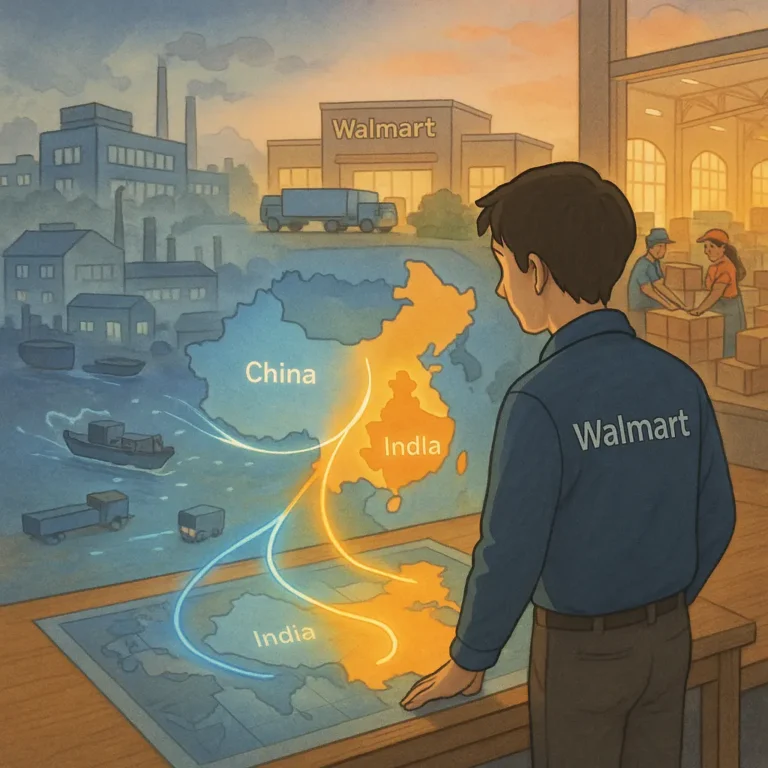
For your business or supply chain to succeed, it goes beyond just offering a great product. You need a smooth-running supply chain; achieving this takes careful planning and management of resources. This is why more business owners are turning to supply chain resource planning (SCRP) to streamline their supply chain operations, thereby boosting their bottom line.
SCRP is more than your average supply chain tool. Effective supply chain resource planning can distinguish your supply chain profitably.
Introduction
Whether you are a business owner or supply chain manager, getting the best out of your supply chain can be a daunting or complex task. From sourcing raw materials to coordinating with suppliers and delivery to the end user, there are so many factors and resources to consider. That is where supply chain resource planning plays a huge role.
Implementing SCRP in your supply chain keeps you ahead, especially in today’s very competitive and fast-paced world. This blog or article will explore the concept of SCRP and how it can help you transform your supply chain.
What is Supply Chain Resource Planning?
Supply chain resource planning is the process of planning, managing, and allocating resources for effectiveness throughout the supply chain to meet customers’ demands and expectations.
SCRP is a powerful tool for streamlining operations, lowering costs, and increasing efficiency in your supply chain. SCRP provides real-time visibility into your inventory, production, and logistics by integrating all aspects of your supply chain. This allows you to optimize resources and make informed decisions within your supply chain.
Benefits of Supply Chain Resource Planning for Businesses
SCRP is impactful and critical to running an effective supply chain. There are numerous benefits, and we will review some of them.
Real-time visibility
Supply chain visibility is great, but SCRP gives you an added layer of REAL TIME visibility in your supply chain, ensuring you can track your products from sourcing to production and then to the delivery of these goods to your customers.
This level of visibility allows you to adjust and manipulate the supply chain in real-time to adapt to new developments, such as increasing the order of raw materials due to a spike or potential spike in demand.
Cost Reduction
An optimized and efficient supply chain is one that enjoys lower costs. SCRP helps you properly allocate and streamline resources, which in turn helps you avoid overstocking, understocking and eliminate wasteful production. What all these have in common for your business is that it cuts down the cost of your supply chain, which saves your business a lot of money.
Improved efficiency
Supply chain resource planning enables you to allocate resources effectively, ensuring that the right materials, equipment, and labour are available at the right time and in the right quantities. This results in increased production efficiency, shorter lead times, and higher customer satisfaction.
Enhanced Collaboration
Effective resource planning fosters collaboration among your supply chain stakeholders. By sharing information, coordinating activities, and aligning goals, your business or supply chain can streamline operations, reduce bottlenecks, and improve overall supply chain performance.
Elements of Supply Chain Resource Planning System
SCRP is a comprehensive tool with many features to help you manage your supply chain effectively. Some of the key features of an SCRP system include:
1. Inventory management: SCRP can assist you in tracking your inventory levels in real time, allowing you to optimize your stock levels and avoid stockouts or overstocking.
2. Production planning: SCRP can assist you in planning your production processes based on demand forecasts and available resources, ensuring you produce enough to meet your customer’s demands.
3. Logistics management: SCRP can assist you in managing your logistics processes, such as shipping and transportation, to ensure that your products arrive on time and at the lowest possible cost.
4. Vendor management: SCRP can assist you with vendor management, including sourcing, purchases, and contract negotiation and management, to ensure you get the best prices and quality.
Challenges of Supply Chain Resource Planning and How to Overcome
Implementing and executing supply chain resource planning can be complex and challenging. Here we review some common challenges faced in supply chain resource planning and explore strategies to overcome them.
1. Demand Variations
Managing demand variability is one of the most difficult challenges in supply chain resource planning. Customer demand fluctuations, seasonal variations, and market uncertainties make it difficult to enjoy accurate forecasting.
To address this issue, businesses can use advanced forecasting systems and techniques, leverage historical data, and invest in collaboration with customers and suppliers to gather insights and improve demand visibility.
2. Supply Chain Complexity
Supply chains in the modern era are frequently complex. This is because it now involves multiple suppliers, manufacturing facilities, distribution centres, and transportation networks. Effective communication, visibility, and collaboration are required to coordinate resources across this complex network.
Implementing supply chain management software and leveraging technologies such as cloud computing and real-time data sharing can help you overcome this challenge by increasing visibility and streamlining communication.
3. Data Availability and Quality
SCRP is heavily reliant on accurate and timely data. However, obtaining relevant data from various systems and ensuring its quality and consistency can be difficult.
You should invest in data integration tools and implement data governance practices to ensure data accuracy, completeness, and reliability. Regular data audits and system updates are also required to keep data quality high.
4. Technology Integration
Integrating supply chain resource planning systems with existing technologies and platforms can be difficult. System compatibility, data integration, and user training must all be carefully considered.
To address this issue, you can thoroughly assess existing IT infrastructure, collaborate closely with technology vendors, and provide comprehensive training and support to employees.
5. Risk Management
Natural disasters, supplier issues, or geopolitical events can all have a significant impact on resource planning. Developing strong risk management strategies and contingency plans is critical to mitigate potential disruptions in your supply chain.
This includes diversifying supplier networks, establishing backup plans for critical resources, and leveraging technologies such as real-time tracking and monitoring systems to proactively detect and respond to potential risks.
6. Organizational Alignment
Effective supply chain resource planning necessitates collaboration and alignment among various organisational departments, including procurement, production, logistics, and finance.
Overcoming this challenge necessitates cultivating a culture of cross-functional collaboration, establishing clear communication channels, and aligning goals and priorities across your supply chain. Regular meetings, shared dashboards, and performance metrics can all help to improve coordination and cooperation.
Supply Chain Resource Planning Process
Step 1: Analysis
The first step in SCRP is to analyze your supply chain and identify areas for improvement. This may entail reviewing your inventory levels, production schedules, logistics processes, and supplier relationships.
Step 2: Planning
Once you’ve identified areas for improvement, you can create a strategy for implementing SCRP. This may include selecting software or tools to assist you in managing your supply chain and defining processes and procedures.
Step 3: Implementation
The next step is to put SCRP into action in your company. This will entail integrating software and tools into your existing systems. You may consider training your employees on the new processes and procedures.
Step 4: Monitoring
Once SCRP is implemented, it becomes vital to monitor its effectiveness and make needed adjustments to achieve optimal results. This may involve tracking key performance indicators (KPIs) and analyzing results anddata to identify potential areas for improvement.
Best Practices for Supply Chain Resource Planning
There are many guidelines to follow to get the best out of your SCRP.
To begin with, it is critical to define specific goals and objectives for your SCRP, such as cost reduction or increased efficiency. This can assist you in remaining focused and tracking your development over time.
Secondly, It is critical to monitor and evaluate your supply chain data on a regular basis. This is helpful in finding opportunities for improvement. This may entail measuring key performance indicators (KPIs); such as inventory turnover or order lead time, and analyzing data to find trends or patterns.
Finally, in order to optimize your supply chain, you must collaborate with your suppliers and consumers. This could include sharing data and insights to improve forecasting or coordinating logistics processes to save money.
Supply Chain Resource Planning Tools and Software
There are numerous SCRP tools and software, ranging from standalone solutions to integrated ERP systems. Some of the most popular SCRP tools include:
1. SAP Supply Chain Management: SAP for supply chain management is a comprehensive solution that includes inventory management, production planning, logistics management, and supplier relationship management.
2. Oracle Supply Chain Management: Oracle for supply chain management is a suite of tools that includes inventory management, demand planning, logistics management, and supplier management.
3. Microsoft Dynamics 365 Supply Chain Management: Microsoft Dynamics 365 for supply chain management is a cloud-based solution that includes inventory management, production scheduling, logistics management, and supplier management.
4. JDA Supply Chain Management: JDA SCM is a suite of tools that includes demand planning, inventory management, production scheduling, logistics management, and supplier management.
FAQ’s on Supply Chain Resource Planning
1. What role does data play in supply chain resource planning?
Data is critical in supply chain resource planning. It lays the groundwork for precise demand forecasting, production planning, and inventory management.
Organizations may make data-driven decisions about resource allocation, production levels, and supply chain optimization using advanced analytics and forecasting technologies, resulting in higher operational agility and decision-making accuracy.
2. How can supply chain resource planning assist in risk mitigation?
Supply chain resource planning assists in risk mitigation by identifying potential supply chain weaknesses and dependencies. It enables firms to create contingency plans, diversify suppliers, identify alternate supply sources, and integrate risk management practices into resource planning.
This proactive approach reduces the effect of interruptions while also improving overall supply chain resilience.
3. Is it possible to adapt SCRP to changing consumer demands?
Supply chain resource planning can be adjusted to meet changing consumer demands. Organizations can respond promptly to changes in customer requirements, modify production volumes, and optimize resource allocation by combining demand planning with production scheduling.
This flexibility allows businesses to meet consumer demand more efficiently, reduce stockouts, and improve overall customer happiness.
Conclusion
SCRP is a powerful tool that can help you optimize your supply chain, decrease costs, and enhance efficiency. So whether you’re a small startup or a major multinational organization, SCRP can help you stay competitive in today’s fast-paced and ever-changing economy.
SCRP integrates all areas of your supply chain. This gives you real-time visibility into your inventory, manufacturing, and logistics, allowing you to make informed decisions and maximize your resources.
While implementing SCRP might be difficult, following best practices and picking the right application greatly improves your supply chain. Software or solutions can help you achieve a big ROI and alter your business operations.

Obinabo Tochukwu Tabansi is a supply chain digital writer (Content writer & Ghostwriter) helping professionals and business owners across Africa learn from real-world supply chain wins and setbacks and apply proven strategies to their own operations. He also crafts social content for logistics and supply chain companies, turning their solutions and insights into engaging posts that drive visibility and trust.







